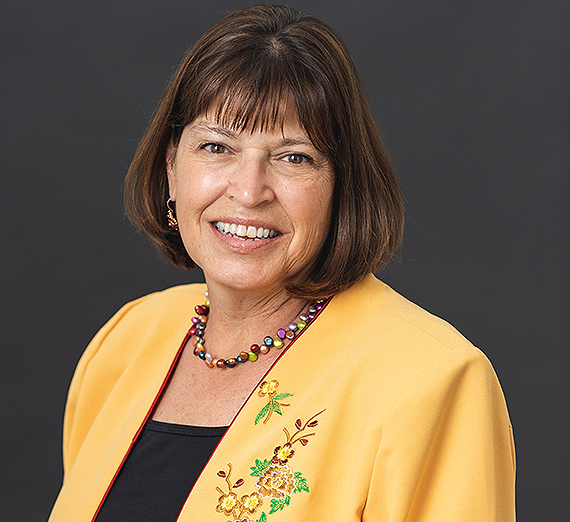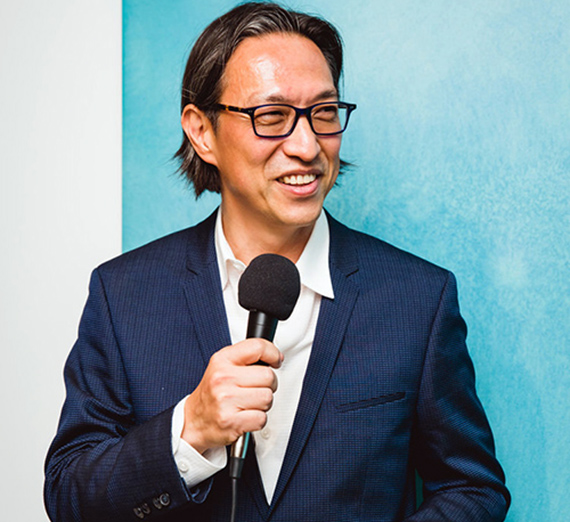"Leadership & Culture Care" with Visiting Scholar in Leadership, Makoto Fujimura

The Jundt Art Museum at Gonzaga University presented a solo exhibition of recent works by renowned international artist Makoto Fujimura, opening Sept. 7 and continuing through Jan. 4, 2020. Fujimura visited Gonzaga in early October for a special exhibition and presentation on "Leadership & Culture Care", hosted by Dr. Shann Ray Ferch of the School of Leadership Studies. Here, Dr. Ferch introduces the community to the unique, compelling work of Makoto Fujimura.
Silence & Beauty - Mysterion: An Introduction to Makoto Fujimura's work by Professor of Leadership Studies, Shann Ray Ferch, Ph.D.
To be pulverized is to be fractured, to be led through a process in which the essential contained embodiment of an object is shattered with such force that the body is fundamentally changed, altered, or ground to dust. Painter Makoto Fujimura’s works, some as small as the palm of a hand, others grandly corporeal, ranging to 33 feet by 11 feet, follow a process of pulverization in their creation. This pulverization, akin to the natural cycle of consolation and desolation in our own individual and collective lives, results in unforeseen beauty.
Fujimura was trained in the ancient Japanese technique of Nihonga in which earthen materials such as malachite and azurite, silver and gold are pulverized and mixed with animal glue to form a palette by turns subdued and exalted, uniquely characterized by both darkness and radiance. Pulverization leads to diminishment, elemental solidity to greater fluidness attended by quietness. In this space, as those who witness art that rises from a multivalent silence, the sisters and brothers of quietness attend us: patience, anticipation, awe, desire, the interior of the soul opening outward and being drawn into an unexpected awakening. The paintings burnish and deepen over time, just as the heart does when tempered by humility and grace.
Mako’s palette as a cultural leader mirrors his diverse expressions of solace and healing as a painter. Having received a Presidential appointment and served on the National Arts Council, he is known for his commitment to using beauty as a language of peace in intercultural dialogue. From this perspective, his art is embodied by communities of leaders who value culture care over culture wars. Cultivating a garden of leadership in order to help heal the heart of the nation, Mako generates a balance of love and power in the crucibles the nation currently faces. From this contemplative embodiment we gain greater capacity to transcend our collective shadow through openness, illumination, and mutually informed discernment with one another. Makoto Fujimura takes as his central ethos the pulverization of physical forms until they arrive at a place of death or sleep. From this long silence, new life is awakened. The luminous surfaces Mako achieves are uncommon in contemporary American art, showing pulverization is not only an echo of our mortality, but also a subtle harmony that beckons our renewal. Notably, the weight of America’s shadow past, our genocidal tendencies, and our unexpressed toxic aversion to vulnerability, places profound pressure on Mako’s work. Mako’s submission to silence, and what he finds in silence, generates the kind of gravity that embeds his art in the interior of the viewer like a thorn the flesh harbors for years, or like a nation of voices singing in the dark of night.
That beauty lies below pulverization is a view distinctly held by ancient mystics of the East and West. That a painter from America by way of Japan creates work that aligns with mystic pronouncements by housing such grace and power in the bodies of canvases both expansive and diminutive, is a sacred blessing that crosses continents and unites strangers. May the paintings exhibited here draw us to a deepened sense of our most fiercely-held dreams, and to the peace that comes to us as a good sister or a good brother, whispering in our ear, “Arise".
- Arts & Culture
- School of Leadership Studies
- Comprehensive Leadership Program
- Doctor of Philosophy in Leadership Studies
- Master of Arts in Communication and Leadership
- Master of Arts in Organizational Leadership



